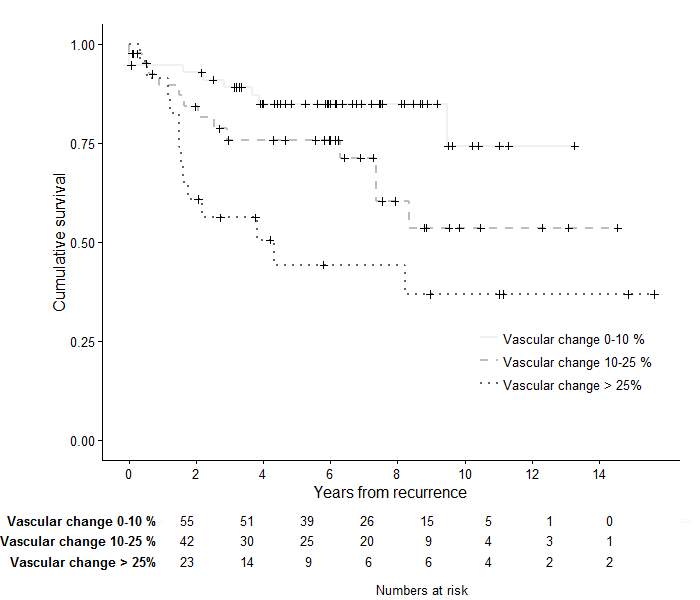Prognostic Histopathologic Characteristics in Recurrent IgA Nephropathy: The Clinical Significance of Vascular Change.
Seoul National University Hospital, Seoul, Korea
Meeting: 2017 American Transplant Congress
Abstract number: D266
Keywords: Graft failure, Kidney, Recurrence
Session Information
Session Name: Poster Session D: Long Term Kidney Outcomes
Session Type: Poster Session
Date: Tuesday, May 2, 2017
Session Time: 6:00pm-7:00pm
 Presentation Time: 6:00pm-7:00pm
Presentation Time: 6:00pm-7:00pm
Location: Hall D1
Background Although recurrent IgA nephropathy (IgAN) after kidney transplantation is known to cause lgraft failure, the clinical significance of histopathologic parameters in allografts needs further investigation.
Methods The study was a retrospective study of 376 kidney transplant recipients, who had the initial diagnosis of IgAN in a tertiary hospital in Korea. We performed allograft biopsies when patients had progressive renal dysfunction, significant proteinuria or hematuria. The histopathologic parameters of interstitial fibrosis, tubular atrophy, and vascular change were collected when recurrent IgAN was diagnosed, and classified into none or minimal (<10 %), mild (10-25 %), and moderate to severe (>25 %) changes. The glomerular pathologies were also reviewed. The renal outcome was death-censored graft failure (DCGF). The impact of histopathologic parameters on renal survival was assessed by Cox regression analyses.
Results During a median follow-up duration of 7.0 (3.7-14.3) years, there were 122 recurrent IgAN patients. As expected, IgAN recurrence was a strong time-dependent risk factor for DCGF (adjusted HR 2.63, 95% CI 1.57-4.40, P<0.001). Interestingly, besides the glomerular changes, both mild (42 patients, HR 2.92, 95% CI 1.13-7.54, P=0.03) and moderate to severe (24 patients, HR 5.04, 95% CI 1.85-14.09, P=0.002) vascular change was significantly associated with DCGF. In contrast, moderate to severe tubular atrophy and interstitial fibrosis lost their prognostic power after adjustment. For further description, a number of 18, 11, and 12 patients had the degree of moderate to severe changes in fibro-intimal thickening, atherosclerosis, and hyalinosis, respectively. Older allograft age and decreased renal function were related to the presence of advanced vascular change.
Conclusions Structural alteration in vessels in transplanted kidneys was significantly associated with graft failure. The vascular change might indicate the status of a functionally-aged allograft. Clinicians should pay more attention to the histopathologic parameter apart from Banff classification components in recurred IgAN patients.
CITATION INFORMATION: Park S, Cho H, Yu M.-Y, Kim Y, Moon K, Kim Y, Lee H. Prognostic Histopathologic Characteristics in Recurrent IgA Nephropathy: The Clinical Significance of Vascular Change. Am J Transplant. 2017;17 (suppl 3).
To cite this abstract in AMA style:
Park S, Cho H, Yu M-Y, Kim Y, Moon K, Kim Y, Lee H. Prognostic Histopathologic Characteristics in Recurrent IgA Nephropathy: The Clinical Significance of Vascular Change. [abstract]. Am J Transplant. 2017; 17 (suppl 3). https://atcmeetingabstracts.com/abstract/prognostic-histopathologic-characteristics-in-recurrent-iga-nephropathy-the-clinical-significance-of-vascular-change/. Accessed December 22, 2025.« Back to 2017 American Transplant Congress
